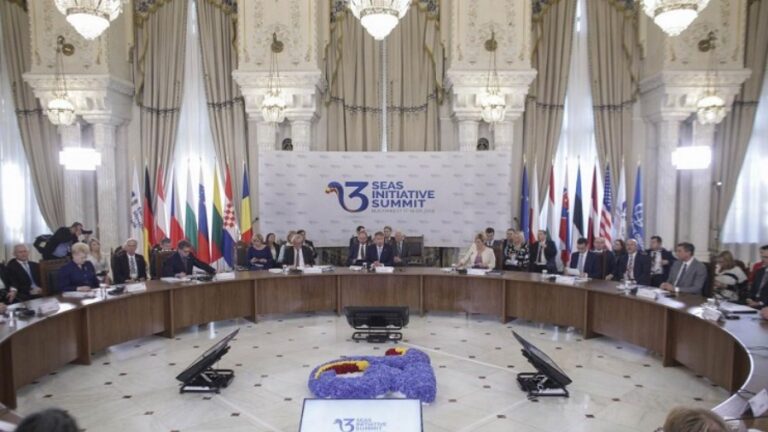The War for the Dollar is Over – Part II: The Fly or the Windshield?
Live images flashing by
Like windshields towards a fly
Frozen in that fatal climb
But the wheels of time, just pass you by
-RUSH, “Between the Wheels”
In part I of this series I told you the war over the US dollar was over because the bane of domestic monetary policy, Eurodollar futures, lost the battle with SOFR, the new standard for pricing dollars.
The ignominious end of the Eurodollar system is a study in the evolution of markets, as a new system replaces an old one. Old systems don’t die overnight. We don’t flip a switch and wake up in a new reality, unless we are protagonists in a Philip K. Dick novel.
More than a decade ago I looked at the responses to President Obama cutting Iran out of the SWIFT system as the beginning of the end of the petrodollar system. The goal was to take Iran out of the global oil markets by shutting Iran out from the dominant dollar payment system.
Out of necessity Iran opened up trade with its major export partners, most notably India, in something other than dollars. India and Iran started up a ‘goods for oil’ trade, or as Bloomberg called it at the time, “Junk for Oil.”
The stick of sanctions created a new market for pricing Iranian oil and a way around the monopoly of US dollar oil trading. India, struggling with massive current account deficits because of their high energy import bill, welcomed the trade as a way to lessen the pressure on the rupee.
Iran needed goods. They worked out some barter trade and the first shallow cuts into the petrodollar system were made.
Turkey eventually joined the fray, seeing the opportunity to act as a middle man by accepting gold into its banks from Iran’s customers and settling up with Iran in dollars or whatever.
Turkey was the first country to make gold a 100% reserve asset in defiance of Basel I capital rules to facilitate this trade. Turkey’s gold ‘reserves’ skyrocketed because of this.
More than 10 years later we’re now looking at the lynchpin of the petrodollar, Saudi Arabia, seriously considering taking other currencies for their oil. The petrodollar was never going to die overnight, it was always going to die as the cost of doing business in dollars rose to make using other currencies a better path to buying/selling oil.
Every time the US went to the sanctions well to coerce conformity, the more “star systems slipped through its fingers,” to quote Princess Leia. While we joke today about never ‘going full retard,’ this is just another way of saying that you should never threaten to nuke someone either.
Trump went sanctions nuclear on Iran in 2018. He failed.
“Biden” and Davos went nuclear on Russia in 2022, going further than even Trump. And they failed even harder. All they did was raise the cost of using dollars in the minds of the dollar’s best customers.
When the cost/benefit framework flips, behavior changes accordingly.
In the world of money, since we don’t have anything close to resembling real capital markets, rather politicized ones, policy is the thing that alters that cost/benefit structure the most. This means while analyzing the market reaction to day-to-day data the listening to the tea-leaf reading by commentators becomes an exercise in chasing your tail through a wilderness of rhetorical mirrors if you don’t include policy changes.
So, with that in mind we have to analyze structural changes to markets from a policy perspective to see what the future really looks like. It’s not that the markets don’t have a say in the matter, it’s that if you analyze the policy through the lens of capital flowing to where it is treated best, then the future outcome is pretty predictable if there isn’t a competing policy put in place to redirect that capital flow later.
In this sense, financial analysis in politicized markets is better described by court politics than spreadsheet output cells.
People want oil. They will buy it regardless of what Davos or “Biden” or anyone else says about this. Until you replace oil itself, no amount of policy changes will fundamentally change the market for oil unless you destroy the supply chain supporting the oil industry.
And analyzing oil supply and demand fundamentals in this case is a fool’s errand when malign actors are materially affecting the supply and demand for oil and are incentivized to ‘game the statistics.’ It’s not that these numbers are worthless, it’s more that they should be discounted heavily until policy changes are assessed.
Diminishing Returns of Socialism
In the end all markets respond predictably to the Law of Diminishing Marginal Utility. If you don’t believe that, then you are a Malthusian and publicly admitting you are a moron with the inability to accept outcomes you cannot personally perceive.
I put the “Peak Oil” folks in this category. And you know who you are.
I put Climate Change believers in this category as well. Yes, by the transitive property of rhetorical mathematics, I just called them all morons.
The Davos solution to their problems of overpromising the deliverables of socialism financed through the dollar is to default on those promises through global monetary inflation using war with Russia and China as the cover and Climate Change as the reason why it’s necessary.
This is to save themselves and secure totalitarian control for their posterity into the next cycle of history.
But history will prove them wrong. Because, in the end, you can’t fight a flowing river any more than you can alter the mass of human behavior with respect to their preferences. If they want to drive a car, eat a steak, live in a house, own a gun or have a child, they will.
You can delay it or make it more expensive but that expense is a double-edged sword, because as Margaret Thatcher famously said, “The problem with socialism is that eventually you run out of other people’s money.” (OPM)
Think of the Eurodollar system as the ultimate expression of OPM, which is a homophone for ‘hopium.’
If you really want to change their behavior, you have to give them more carrot than stick. This appraoch worked for decades to guide us towards their more perfect technocratic dystopian unions as long as money got progressively cheaper during the dollar reserve standard.
This system broke in 2008 and by 2011 forced the world, through a compliant Federal Reserve, into birthing the Coordinated Central Bank Standard, where all the major central banks would take turns inflating a deflating credit system.
But back to Diminishing Marginal Utility. The law simply states that the acquisition of the next unit of a thing, any thing (water, money, food, credit dollars, etc.), is worth less to a person than the previous unit. We act to alleviate our perceived need to hedge against future uncertainty. So, in hurricane season, we Floridians stock up on bottled water, propane, toilet paper, preserved food, etc.
Price is supposed to tell us when to stop stocking up and really assess what’s important to us. I’ll leave my rant about ‘anti-gouging’ laws on the cutting room floor.
It is this verity about human action in the face of both scarcity and abundance that creates the Newtonian ‘opposite reaction’ to rising/falling costs.
It is what always squashes the fears of Malthusian thinking against the windshield of history.
So, while you can bully people into acting against their preferred outcomes for a while by raising the costs of disobedience to be greater than the marginal return of defiance, eventually a reversal of that cost/benefit framework takes place.
For the Fed and the domestic banking interests, the best way to get to their preferred end, a domestically-driven cost structure to the US dollar, it meant offering the market gradually a better alternative to the old system or Eurodollars.
SOFR is a collateralized rate, delivered to the market by the market for dollars. It’s a fundamentally superior interest rate product than LIBOR, which is a number picked out of thin air by 18 banks of dubious character and even more dubious motivations.
Eurodollar futures are set based on LIBOR and because of LIBOR being written previously into every old debt and debt derivative instrument out there, LIBOR was the tail wagging the monetary policy dog.
The five-year roll out of SOFR was done to introduce the better system and phase it in allowing the market to come to the ‘right’ conclusion that it is superior. If SOFR wasn’t a superior product to LIBOR no matter how much the Fed tried to force it onto the market, the market would have rejected it.
Eurodollar futures would have remained a vibrant and liquid market up to the last day and call the Fed’s bluff.
But SOFR was a superior product, gradually weaning the markets off LIBOR. Now there is still a whole lotta LIBOR-indexed debt out there and a lot of people are holding out hope this is all just a bad dream, but it’s not.
There has been an uptick in loans switching to the Federal Reserve’s recommended Secured Overnight Financing Rate (Sofr) from Libor so far this year, but “a huge volume” still needs to transition, he said.
Of the loans, many of which are held by CLOs, that still need to remediate, about 55% risk falling back to the prime rate, which is 7.75%, compared to around 4.5% for Sofr, if they do not find a transition path before the deadline, according to KKR.
That difference could hurt borrowers with lots of debt and lower credit ratings, like CCC or B-, as their chances of downgrades rise, and it also puts lenders, such as CLOs that are measured by how many CCCs and defaults are in their vehicles, in a difficult spot, said Reback.
“That is a significant risk for the loan market,” she said.
Caught between the Scylla (a 25 bps spread over LIBOR) and Charybdis of prime, 3.50% over that, the outcome is inevitable. Anyone holding out is likely hoping for a last-minute policy change to help them out. If I had to guess those holdouts are at Blackrock trying to blackmail the Fed like they blackmailed the Bank of England last summer over UK pension obligations.
I don’t know that the situation is analogous but it certainly smells that way.
The BRICS and the Golden Path
I had Vince Lanci on the podcast recently to discuss this very thing, how to replace an old system with a new one gradually.
He’d been thinking about remonetizing gold, spurred on by a Twitter Spaces we did where we discussed gold redeemable Treasuries, or as Vince put it, “throw gold out onto the yield curve.” Listen to the podcast as we go over this idea in detail.
Like the fall of the petro- and euro- dollar, the re-monetization of gold cannot happen overnight. Instead something like that has to happen over time. Again, using more carrot than stick is the better, more sustainable path.
The markets are screaming for a solution to the current mess — wanting less debt, even less leveraged debt, fewer wars, more decentralization — but everyone also doesn’t want to be reduced to Bartertown and all that that implies.
So, the best way to achieve that is to signal to the market that this exactly what you want. It starts with policy. In the case of the Fed it starts with being wholly unapologetic of the political consequences of aggressively tight monetary policy.
FOMC Chair Jay “Baller” Powell gave us that this week testifying before the Senate Banking Committee.
Powell reiterated his ‘higher rates for longer’ mantra. But, unlike in the past, the markets are now actually listening to him. There are still holdouts, trying to undermine the Fed, but I’ll leave the ECB and BoJ out of the discussion for now. The bond markets are grudgingly accepting this but the yield curve on US Treasury debt is still stubbornly inverted.
But more significantly, Powell told Sen. Cynthia Lummis the Fed flat-out does not consider the fiscal situation on Capitol Hill in making monetary policy. (H/T Jim Bianco).
Read that passage carefully and you’ll see this FOMC Chair isn’t above telling Congress their business. You may not believe Powell but we know there are ways of getting out of this fiscal and monetary mess if we commit to doing it, rather than pouring gasoline on the socialist fire that the “Biden” Administration just did with their budget proposal.
Moreover, what’s unspoken by Powell and others in the position to support him is what’s lurking on the other side of the International North South Transport Corridor (INSTC), a growing international framework for trade wholly outside the control or threats of the western political establishment and their slap-happy sanction monkeys we call heads of state.
Powell can see the de-dollarization writing on the wall and he knows now is the time to slow down that trend and find a way to make the dollar more trustworthy. But, again, he can only deal with one side of that equation — the monetary policy side. The Fiscal and regulatory side are still firmly controlled by, frankly, shitbag commies; old, terrified colonial interests in Europe and the northeast US who see their time passing and refuse to accept it with grace.
People who would rather burn the world to the ground than let it fall into the hands of those they consider ‘the help.’
But ‘the help’ are no longer helpless in the face of a big bully US dollar. They have a plan and they are executing it. That plan clearly involves the return of gold as the asset to balance the trade books to rebuild global trust and if the US and Europe don’t stop acting like entitled, spoiled children on the world stage, they will drop the gradualism and one day we will wake up in a different reality.
This was Powell’s real message to Congress this week. It is the clear geopolitical imperative staring us all in the face. But if we don’t start down it now voluntarily, the superior monetary system will eventually outcompete and capital will flow to where it is treated best.
This is the future policy choice we have to make our peace with. Because if we don’t I’m reminded of an old, bad joke I first heard as a teenager. “What’s the last thing that goes through a fly’s head before it hits the windshield of your car?”
“It’s ass.”
“We can move from boom to bust
From dreams to a bowl of dust.
We can fall from rockets red glare
Down to — “Brother can you spare…”
Another war — another wasteland —
and another lost generation…”
— RUSH, “Between the Wheels”







